The mortgage on the GF's house goes away shortly, and we are thinking about trying to do a number of improvements on it, including siding, insulation upgrades, and so on. Probably bump out a couple of spaces to increase the amount of livable space as well. I have also been seriously thinking about trying to do a hydronic heating / DHW system, using infloor radiant driven by a combo of a solar water heating and a wood burner, along with about 1kgal storage.
The house is a contemporary style, built circa 1980, frame construction, and (I think) 3.5" fiberglass insulation in the walls, rafter depth blown cellulose in the master bedroom ceiling (with plywood decking over the rafters for storage) and most of the other accessible ceilings. The living room has a cathedral ceiling (24' floor to peak!) with wood board panelling on the underside, and some amount (not sure how much) fiberglass between the panelling and the roof deck.
Current heating / cooling is a fairly new forced air HVAC system, blowing into the original ductwork. This works reasonably well, but not great. Hot water is tanked, with everything running on Natural Gas. In addition we have been heating the first and 2nd floors with a VC Encore wood stove - If I keep it fed, it will keep the HVAC off down to about 25* or so, and helps a lot below that, as long as we are willing to be comfortable at ~65*F I'm guessing it probably does about 30-35Kbtu/hr the way I run it. The stove doesn't do anything for the basement, which stays about 55* or so.
I have attached a floor plan of the 1st floor. The basement is about the same footprint, minus the laundry room, garage and porches. The 2nd floor is about 20' wide centered on the first floor except for the living room, and has the master suite.
We also have an approx 16kgal inground pool, currently not heated at all, and part of the plan would be to use the surplus solar power to heat the pool in the summer and shoulder seasons, plus the GF has expressed fantasies about hot tubs...
According to the Slant/Fin Hydronic explorer program, I have a current heat loss of 87,269 BTU/hr using an outside design temp of 0*F, indoor of 70*F and using a design hot water temp of 120*F By floors, I have
Basement 39,912
1st Floor 39,140
2nd Floor 8,740
Now for the questions...
1. If I design a system with the current heat loss figures, then improve the insulation on the house, will that cause me problems? I am assuming that it would just mean running the floor to a lower temperature, and getting longer times between burns - not a big deal...
2. We have an existing 6" double wall chimney, formerly used by the gas furnace, and DHW heater - could it be used with a wood boiler if I got rid of the water heater, or would I need to replace it with an HT103 chimney? If I did have to replace it, would the replacement have the same dimensions and clearance requirements as the current gas chimney?
3. If I were to put a boiler where it could connect to the chimney above, I would have to work around the through the wall PVC venting for the existing HVAC furnace (which I want to leave in place as a backup, and to enable us to keep the lower gas billing rate for having gas as "primary heating") - how much can one move that venting around - i.e. right now it comes out of the furnace and almost immediately angles over to the wall, can I go up higher so it isn't pitched as steeply?
4. Most of the rooms in the house are fairly standard, and I would imagine that there would be no problem getting enough tubing into the floors to heat them, though I haven't tried to work out the math on that yet. However I'm worried about the living room - with the extreme high ceiling, it seems like a real challenge - I have calculated that it will have a 15,663 BTU/hr heat loss, for only 261 sq ft of floor area, or about 60 btu/sq ft. According to Fred Seaton's website, it isn't good to run a floor at over 85*F, which is only going to give about 30btu/sq.ft... Is this a problem? If so, how would you fix it? Or can I just not worry about heating the upper areas that much (the lower parts of the room are only about 6,000BTU/hr loss rate) It is also worth noting that I would still be having a wood stove in that room, so I could always just heat what I could with the radiant, and fire up the stove when it got really cold out.
5. Storage - The basement is full, with the only access being either down the stairs from the kitchen, or outside via a bulkhead stair, so I don't see any way to do pressurized storage inside, and I am NOT interested in outside storage for a number of reasons... However the room where the boiler would be is currently unfinished with concrete walls (I believe 8" thick). Like all of the basement, it is roughly 4' above grade and 4' below. The room is about 10 ft wide. Would it work to build a 4-5 foot high concrete block wall across the room (I am assuming with plenty of rebar to tie it into the walls and floor) and use it and the other three walls of the cellar to make a storage tank? (obviously with plenty of insulation and an EPDM liner...)
Gooserider
The house is a contemporary style, built circa 1980, frame construction, and (I think) 3.5" fiberglass insulation in the walls, rafter depth blown cellulose in the master bedroom ceiling (with plywood decking over the rafters for storage) and most of the other accessible ceilings. The living room has a cathedral ceiling (24' floor to peak!) with wood board panelling on the underside, and some amount (not sure how much) fiberglass between the panelling and the roof deck.
Current heating / cooling is a fairly new forced air HVAC system, blowing into the original ductwork. This works reasonably well, but not great. Hot water is tanked, with everything running on Natural Gas. In addition we have been heating the first and 2nd floors with a VC Encore wood stove - If I keep it fed, it will keep the HVAC off down to about 25* or so, and helps a lot below that, as long as we are willing to be comfortable at ~65*F I'm guessing it probably does about 30-35Kbtu/hr the way I run it. The stove doesn't do anything for the basement, which stays about 55* or so.
I have attached a floor plan of the 1st floor. The basement is about the same footprint, minus the laundry room, garage and porches. The 2nd floor is about 20' wide centered on the first floor except for the living room, and has the master suite.
We also have an approx 16kgal inground pool, currently not heated at all, and part of the plan would be to use the surplus solar power to heat the pool in the summer and shoulder seasons, plus the GF has expressed fantasies about hot tubs...
According to the Slant/Fin Hydronic explorer program, I have a current heat loss of 87,269 BTU/hr using an outside design temp of 0*F, indoor of 70*F and using a design hot water temp of 120*F By floors, I have
Basement 39,912
1st Floor 39,140
2nd Floor 8,740
Now for the questions...
1. If I design a system with the current heat loss figures, then improve the insulation on the house, will that cause me problems? I am assuming that it would just mean running the floor to a lower temperature, and getting longer times between burns - not a big deal...
2. We have an existing 6" double wall chimney, formerly used by the gas furnace, and DHW heater - could it be used with a wood boiler if I got rid of the water heater, or would I need to replace it with an HT103 chimney? If I did have to replace it, would the replacement have the same dimensions and clearance requirements as the current gas chimney?
3. If I were to put a boiler where it could connect to the chimney above, I would have to work around the through the wall PVC venting for the existing HVAC furnace (which I want to leave in place as a backup, and to enable us to keep the lower gas billing rate for having gas as "primary heating") - how much can one move that venting around - i.e. right now it comes out of the furnace and almost immediately angles over to the wall, can I go up higher so it isn't pitched as steeply?
4. Most of the rooms in the house are fairly standard, and I would imagine that there would be no problem getting enough tubing into the floors to heat them, though I haven't tried to work out the math on that yet. However I'm worried about the living room - with the extreme high ceiling, it seems like a real challenge - I have calculated that it will have a 15,663 BTU/hr heat loss, for only 261 sq ft of floor area, or about 60 btu/sq ft. According to Fred Seaton's website, it isn't good to run a floor at over 85*F, which is only going to give about 30btu/sq.ft... Is this a problem? If so, how would you fix it? Or can I just not worry about heating the upper areas that much (the lower parts of the room are only about 6,000BTU/hr loss rate) It is also worth noting that I would still be having a wood stove in that room, so I could always just heat what I could with the radiant, and fire up the stove when it got really cold out.
5. Storage - The basement is full, with the only access being either down the stairs from the kitchen, or outside via a bulkhead stair, so I don't see any way to do pressurized storage inside, and I am NOT interested in outside storage for a number of reasons... However the room where the boiler would be is currently unfinished with concrete walls (I believe 8" thick). Like all of the basement, it is roughly 4' above grade and 4' below. The room is about 10 ft wide. Would it work to build a 4-5 foot high concrete block wall across the room (I am assuming with plenty of rebar to tie it into the walls and floor) and use it and the other three walls of the cellar to make a storage tank? (obviously with plenty of insulation and an EPDM liner...)
Gooserider


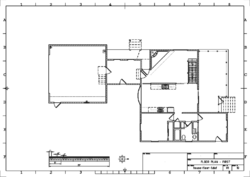
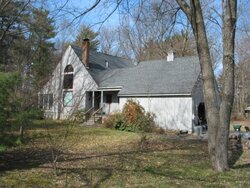
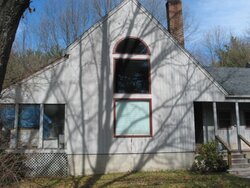
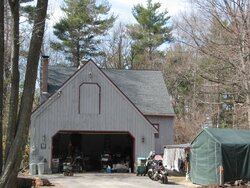
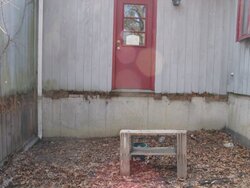
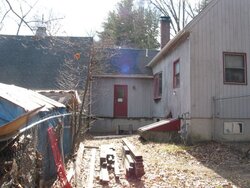
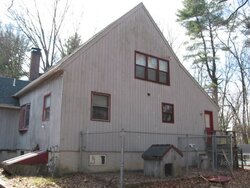
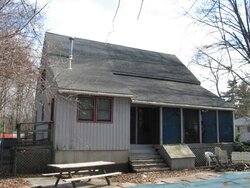
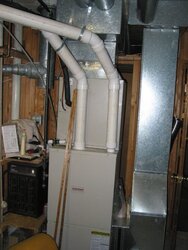
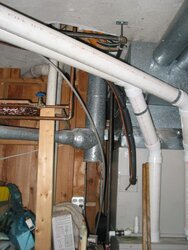

 I seem to have confirmed my fears that I've expressed earlier - I had gotten the impression that Mass. required an ASME kickback payement (err.. Stamp) on boilers, but I hadn't actually confirmed that...
I seem to have confirmed my fears that I've expressed earlier - I had gotten the impression that Mass. required an ASME kickback payement (err.. Stamp) on boilers, but I hadn't actually confirmed that...